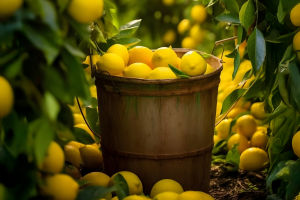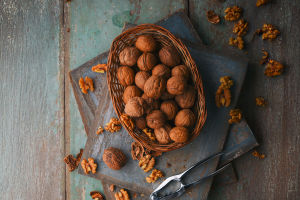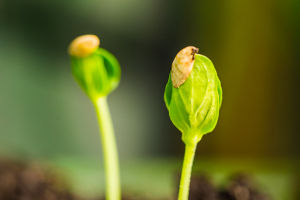Inside the Plant Stem
Hello, Lykkers! Stems might not get as much attention as flowers or leaves, but they're truly plant superheroes. From supporting weight to transporting nutrients and water, stems are full of surprises.
They come in different forms—some are tall and sturdy, others are soft and flexible. Some even store food or help the plant climb.
In this guide, we'll explore the fascinating structure of plant stems. First, we'll look at two major types: stems and herbaceous stems. Then, we'll zoom in on the parts that make a stem work—like vascular bundles, nodes, and internodes. Get ready to take a closer look at what's really going on in those green (or brown) stalks you pass every day.
Part 1: Types of Stems
Let's start with the big picture: not all stems are built the same. And you'll see that once you learn to tell the herbaceous form.
Stems: Built for the Long Haul
You're already familiar with stems. Think of trees, shrubs, or rose bushes—anything with bark or a firm structure. These stems grow thicker over time and develop rings you can count (like tree trunks). They support large plants for years or even centuries. If you touch one, it feels hard and rough because it contains layers of protective tissues and water channels that age with the plant.
Now imagine standing next to a tree and placing your hand on its trunk. That trunk isn't just holding up branches—it's moving water up and nutrients down all day long. And when winter comes, that armor helps protect the plant from wind, cold, and damage.
Herbaceous Stems: Light and Lively
On the flip side, herbaceous stems are soft, flexible, and often green. They're usually found on smaller plants like daisies, sunflowers, or basil. These stems don't last as long but grow quickly and support flowers, leaves, or crops for a single season or a few months.
If you're growing herbs in a garden or keeping flowers in a vase, chances are you're working with herbaceous stems. And while they might not seem strong at first glance, they do their job efficiently—especially in environments where fast growth is a big advantage.
Part 2: Stem Anatomy in Action
Now let's go beneath the surface and talk about what's inside these stems. Whether herbaceous, they all rely on an organized system to function.
Vascular Bundles: The Transport Network
Inside every stem, there's a network of tubes running up and down—these are the vascular bundles. They're a bit like plant highways, with xylem tubes carrying water from the roots to the leaves and phloem tubes sending nutrients the other way. It's a constant two-way trip that keeps the plant alive and growing.
You can think of vascular bundles like invisible lifelines. And depending on the plant type, they can be scattered (as in grasses) or neatly arranged in circles (as in sunflowers or tomatoes). The next time you slice a stem of celery and see little dots inside, you're actually seeing those bundles up close!
Nodes and Internodes: The Stem's Landmarks
Take a look at any plant stem and notice the little bumps or joints where leaves, branches, or buds grow out—those are called nodes. The sections in between those nodes? Those are internodes. It might sound simple, but these parts are key to how a plant shapes itself.
When you water or feed your plant, it decides where to grow based on signals in the nodes and internodes. A plant with short internodes will look compact and bushy, while one with long internodes might be stretching toward sunlight or space. As a gardener or plant lover, understanding this helps you prune wisely or guide your plant's growth.
So there you have it, Lykkers—a full tour of plant stems, from sturdy tree trunks to soft green stalks, and the hidden systems that keep everything running. Whether you're admiring a blooming sunflower or walking past a tall oak, now you know the stem's role in every inch of growth. It's more than a stick in the middle—it's the plant's core support and power supply, working every day in quiet brilliance. Next time you meet a plant, give its stem a second glance!
-
 Lemon's Secret PowerThis Sour Fruit Can Remove Germs Naturally—You’ll Never Look at Lemons the Same Way Again!
Lemon's Secret PowerThis Sour Fruit Can Remove Germs Naturally—You’ll Never Look at Lemons the Same Way Again! -
 Brain-Boosting WalnutsWhy Walnuts Are Called "Brain Food"—The Secrets Behind This Superfood Will Surprise You!
Brain-Boosting WalnutsWhy Walnuts Are Called "Brain Food"—The Secrets Behind This Superfood Will Surprise You! -
 Secrets Inside a SeedWhat’s hiding inside a seed that makes it burst into life?
Secrets Inside a SeedWhat’s hiding inside a seed that makes it burst into life?
Copyright © zogu 2021 - 2025. All Right Reserved.